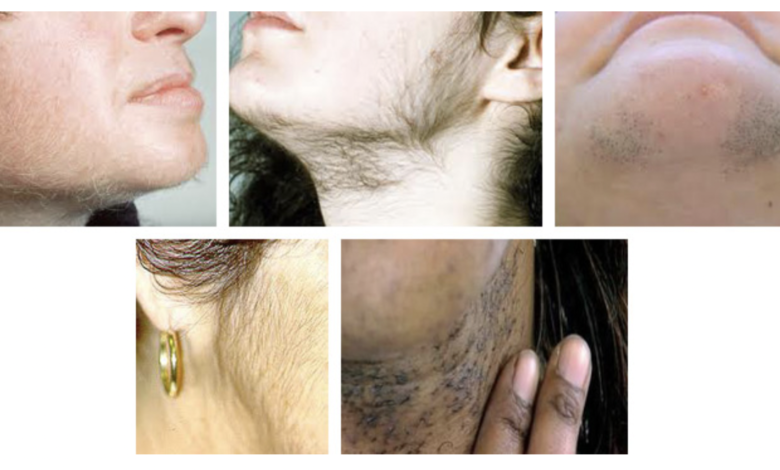
Unwanted or superfluous hair growth is a common concern for many individuals, affecting both men and women across various body parts. Whether it’s excessive facial hair, body hair, or other areas, it can cause self-consciousness and impact confidence. Fortunately, with advancements in technology and various hair removal methods, there are several effective ways to manage superfluous hair. In this blog post, we will explore what causes superfluous hair growth, the best ways to remove it, and how to achieve smooth, hair-free skin.
What is Superfluous Hair?
Superfluous hair, commonly known as excessive or unwanted hair, refers to hair that grows in areas where it is not typically expected, often due to hormonal imbalances, genetics, or other underlying health issues. This condition may be localized to specific areas like the upper lip, chin, or legs, or it may cover larger sections of the body.
In most cases, the growth of superfluous hair is influenced by genetics or hormonal fluctuations, especially during puberty, pregnancy, or menopause. However, it can also be linked to conditions such as polycystic ovary syndrome (PCOS) or certain medications that may increase hair growth.
Causes of Superfluous Hair Growth
- Hormonal Imbalances: Hormones play a significant role in regulating hair growth. An overproduction of male hormones (androgens) in women can lead to excessive hair growth, especially on the face and body. This is often seen in women with conditions like PCOS or adrenal gland disorders.
- Genetics: Family history and genetics are a major factor in hair growth patterns. If your parents or grandparents had excessive hair growth, there’s a higher likelihood that you may experience similar issues.
- Pregnancy and Menopause: During pregnancy, hormonal changes can cause an increase in hair growth. Similarly, women going through menopause may experience changes in hormone levels that lead to unwanted hair growth, particularly on the face.
- Medications: Some medications, particularly those that affect hormone levels, can cause excessive hair growth as a side effect. Corticosteroids, anabolic steroids, and certain birth control methods can contribute to superfluous hair growth.
- Health Conditions: Conditions like PCOS, Cushing’s syndrome, and other hormonal disorders can result in abnormal hair growth patterns. These conditions lead to an increase in androgen levels, triggering the growth of hair in areas where it is typically minimal or absent.
How to Fix Superfluous Hair: Effective Removal Methods
If you’re dealing with superfluous hair, there are several treatment options available to help you achieve smooth, hair-free skin. The most effective methods depend on factors like the area of hair growth, skin sensitivity, and the underlying cause of excessive hair growth.
Here are the most common and effective ways to fix superfluous hair:
- Shaving Shaving is one of the most straightforward and cost-effective methods for removing unwanted hair. It is quick, painless, and can be done at home. However, the results are temporary, and you will need to shave regularly to maintain a hair-free look. Shaving is suitable for areas like the legs, underarms, and bikini line.
- Waxing Waxing removes hair from the root, providing longer-lasting results compared to shaving. It can be done at home or professionally in a salon. Waxing works well for larger areas like the legs, arms, and back. While it may be a bit painful, it is effective in removing even the shortest hair. It’s essential to exfoliate the skin before waxing to prevent ingrown hairs.
- Laser Hair Removal One of the most popular long-term solutions for superfluous hair is laser hair removal. This method uses concentrated light to target hair follicles, effectively reducing hair growth over time. It works best on individuals with fair skin and dark hair, as the laser targets the pigment in the hair. Multiple sessions are required to achieve permanent or long-lasting results. Laser hair removal is suitable for the face, legs, arms, and bikini line.
- Electrolysis Electrolysis is a permanent hair removal treatment that involves inserting a tiny needle into each hair follicle and using electrical currents to destroy the hair root. This method works for all skin and hair types, making it suitable for individuals with lighter or finer hair. Electrolysis requires several sessions and can be more time-consuming than laser treatments, but it is effective in treating smaller areas like the chin, upper lip, and eyebrows.
- Depilatory Creams Depilatory creams are chemical-based products that break down the protein structure of hair, causing it to dissolve and be wiped away. These creams are easy to use at home and are effective for removing hair from areas like the legs, arms, and bikini line. However, it’s essential to do a patch test before using depilatory creams to avoid allergic reactions or skin irritation.
- Threading Threading is an ancient hair removal technique commonly used for facial hair, especially on the upper lip, chin, and eyebrows. A cotton thread is twisted and pulled along the skin, trapping the hair and removing it from the root. This method provides precise results and can last up to 4 weeks. It may cause some discomfort but is ideal for sensitive skin.
- Prescription Medications For individuals experiencing superfluous hair growth due to hormonal imbalances or underlying medical conditions, medications may be prescribed to regulate hormone levels. Anti-androgen medications, such as spironolactone, can help reduce the production of male hormones in women, leading to a reduction in unwanted hair growth. Birth control pills may also help balance hormones and prevent excess hair growth in some women.
- Electrolysis for Facial Hair Electrolysis is an ideal solution for unwanted facial hair, such as chin, upper lip, or eyebrow hair. The treatment involves applying a tiny probe to each hair follicle and using a current to destroy the follicle, leading to permanent hair removal. Electrolysis is a safe and effective treatment for both men and women, although it may require multiple sessions for optimal results.
Find out why MNRF treatment is a popular choice for skin rejuvenation.
Home Remedies for Superfluous Hair
While professional treatments offer more effective and lasting results, some individuals prefer to try natural remedies for managing superfluous hair. These home remedies can help reduce hair growth or slow down the process but may not be as effective as clinical treatments.
- Turmeric Paste: Turmeric has been used for centuries as a natural hair removal agent. It contains curcumin, which may slow hair growth when applied to the skin regularly.
- Sugar and Lemon Scrub: The combination of sugar and lemon creates a natural exfoliant that may help to remove dead skin cells and unwanted hair.
Conclusion
Superfluous hair is a common condition that can be managed through various methods, ranging from temporary solutions like shaving to more permanent treatments such as laser hair removal and electrolysis. The choice of treatment depends on the area of hair growth, the underlying cause, and personal preferences. Consulting a dermatologist or medical professional can help you determine the best option to address unwanted hair and achieve smoother, hair-free skin. Whether you choose home remedies or professional treatments, managing superfluous hair is entirely possible with the right approach.
Find expert Facial treatment course in NY to reduce wrinkles and fine lines.



